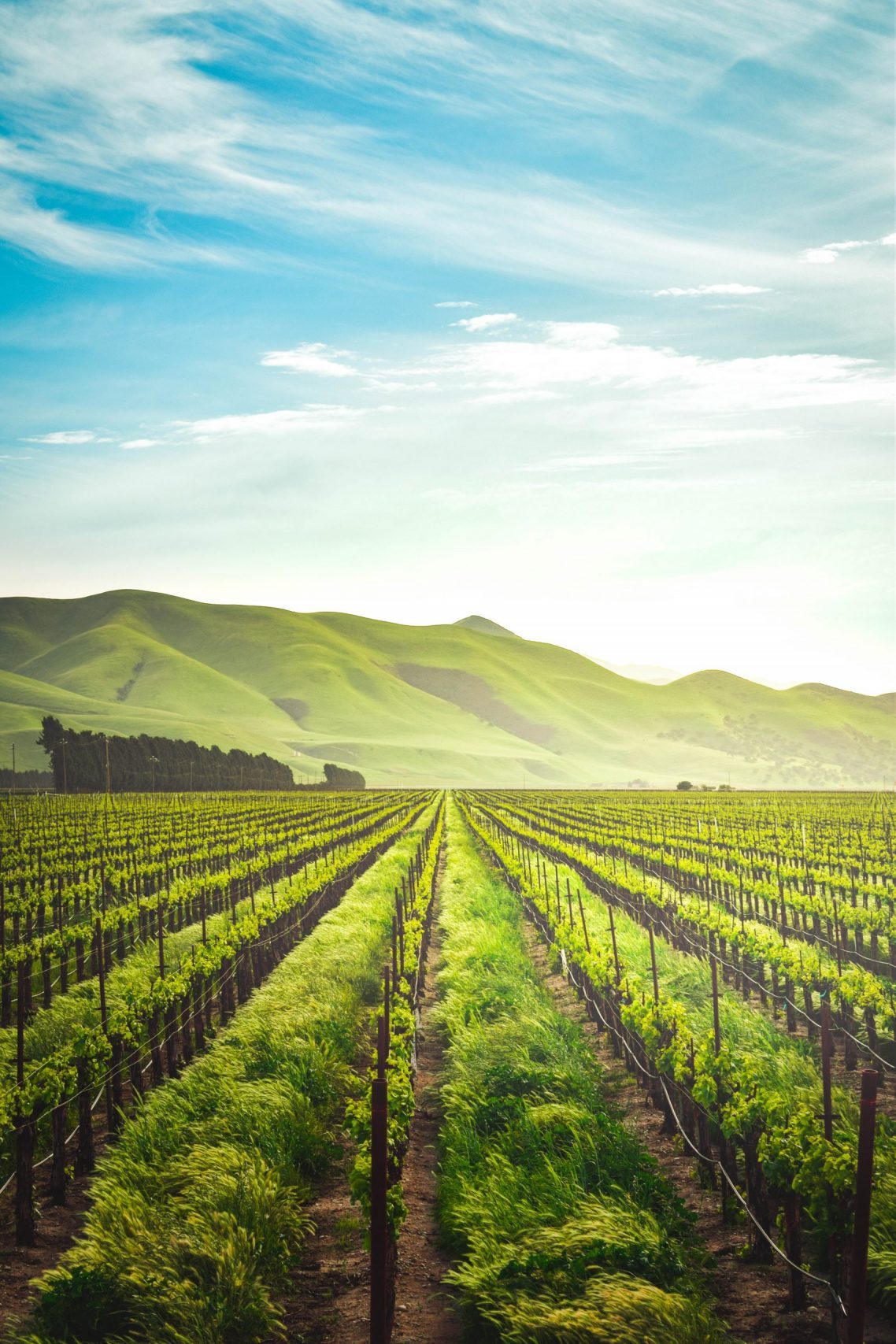
On June 9, the finals of the 2021 National Digital Eco-Innovation Competition and Summit opened at the Xianxia Lake Convention and Exhibition Center in Suichang County. Alibaba Cloud, together with representatives and entrepreneurs from all over the country, released The Outlook on the Trend of the Digital Eco-Innovation in Counties.
This research report was also supported by Zhang Jianfeng, President of Alibaba Cloud Intelligence and President of Alibaba DAMO Academy, Liu Xiangwen, Vice President of Alibaba Cloud and General Manager of the Marketing and Public Affairs Department, and Xiao Lihua, Vice President of Alibaba Group and President of Alibaba Cloud Research Center.

The report points out that new infrastructure will be used to create a new space and time, and the county’s digital ecosystem will be accelerated. It also reveals that the accelerated penetration of digital technologies has enabled nine trends, including the county economy, the reconstruction of the county production factors with new information infrastructure, and the gradual release of county-level ecological value supported by digitalization.
The following is the full text of the report.

Introduction
A county is not only the strategic cornerstone of China’s economic development; it is the core carrier of multiple strategies, such as agricultural and rural modernization, rural revitalization, and urban-rural integrated development, in the new era. In 2019, the county population accounted for nearly 60% of the country’s total population, while the GDP only accounted for 35% (Research on China’s Top 100 County Economy 2020 from CCID.)
In the new era, the development of the digital economy and the promotion of digital transformation of the county’s traditional industries are important breakthroughs to promote the high-quality development of the county economy. Currently, except for a few strong counties close to the core cities of Yangtze River Delta and Pearl River Delta, most of the counties in our country are restricted by talents and industrial bases. The scale and application of digital technology industries, such as cloud computing and big data, are relatively lagging, which restricts the new and old kinetic energy transformation and the new and old economy iteration in the county.
Under the guidance of strategies such as digital villages, the prosperity and in-depth application of digital technology will create a favorable environment for the innovation and development of counties. As the main battlefield for rural revitalization and the important place for the transformation of traditional industrial clusters, counties will take digitalization as the key engine to push forward nine trends in three dimensions of county digital ecology, such as factor upgrading, mode innovation, and governance optimization.
Factor Upgrade – Stimulate New Impetus for County Digital Development
With the acceleration of new infrastructure and the implementation of digital technology, our country’s counties will gradually enhance the gathering ability of high-end factors, improve the allocation efficiency of factor resources, and accelerate the transformation of a county’s ecological value, thus promoting the reorganization of factor market, business models, and organization models to form a new driving force for county digital development.
Trend 1: The accelerated implementation of digital technology fully empowers the county economy.
The new generation of information and communication technology is rapidly being implemented. It is fully and deeply integrated with the county agriculture, forestry, animal husbandry and fishery, agricultural and sideline products processing, industrial product manufacturing, leisure tourism, and other industries, empowering the county economy.
In the field of agricultural production, the in-depth application of a new generation of sensor technology, geographic information technology, mobile computing processing technology, and artificial intelligence technology, coupled with the perception and data collection of soil, weather, and other environments and operation processes, such as seedling raising and farming, work together to achieve intelligent irrigation, precision fertilization, pest control, crop growth monitoring, and more. What’s more, they are also helpful in generating agricultural task planning, use planning of agricultural material, and managing the agricultural planting plan to realize automatic operation in the process of agricultural production and digital control in the process of management.
Since the agricultural production in our country is mainly based on the mode of small-scale peasant production and management currently, the input-output ratio of digital agriculture is relatively low, and it is relatively difficult to promote and adopt the achievements of technological progress. With the gradual advancement of the reform of agriculture and rural areas, the innovation of new agricultural management entities has emerged, and digital agriculture will also usher in long-term prosperity.

n the manufacturing field, as the new digital infrastructure accelerates the extension and coverage to counties, the intelligent production management and product quality control based on artificial intelligence will be gradually applied in county-related manufacturing scenarios, thus facilitating refined management and efficiency improvement. The advent of 5G will also expand new application scenarios for the industrial IoT, realizing the full-process intelligence of supply, research, production, sales, and service.
However, currently, the development of the industrial Internet is still in its infancy. It is estimated that the industry will not enter the stage of full interconnection and independent intelligence until 2025 to 2030. Therefore, the application of 5G on a large scale in industry, especially in manufacturing scenarios in counties, still needs a long time.
In the service sector, digital technologies, such as virtual reality intelligent modeling technology and natural language processing technology will accelerate the cross-media integration of text, audio-visual, and real-world scenarios. As such, it is conducive to boosting the all-around application of VR audio-visual entertainment, immersive video games to the county tourism and culture, and accelerating the rapid development of county-level Internet medicine and online education.
Trend 2: The reconstruction of county production factors with new information infrastructure.
The new information infrastructure can link the information world efficiently, composed of bits with the physical world composed of atoms, thus stimulating and promoting corresponding capability improvement, industry transformation, and field revolution. The new infrastructure will change the traditional space-time concept, speed up the reconstruction of county production factors, and reshape the competitive advantage of the county economy.
On the one hand, the information infrastructure builds real-time county information connection, data processing and cross-domain collaboration capabilities, distance efficient collaborative office, online shopping, online entertainment, distance education, and medical care. As a result, the location importance of the physical world is weakened to a certain extent, so some remote counties and villages with good ecological environments and distinct cultural symbols are more attractive to talents. They can become the development stations for talents specialized in localization and the intermittent aggregation place to carry out activities, such as training and study, and closed development for high-end talents in other cities, constituting the reverse attraction to population and economic factors.
On the other hand, the implementation of digital technologies brought about by the new infrastructure will promote the aggregation, excavation, and analysis of massive data, such as county-level ecological data, agricultural data, characteristic industrial cluster data, leisure tourism data, and other resource elements, to realize market-oriented development and application, forming a unique economic value of county data.
It also improves the efficiency of county production, distribution, exchange, consumption, and other links and promotes the high-level jump of the county industrial chain, supply chain, and value chain. During the pandemic, the stable operation of 4G/5G and optical fiber networks provided an important guarantee for the new consumption pattern, which is county magistrate + livestreaming + agricultural products sales.
At the same time, the interaction, linkage, and integration of digital technology and data elements with traditional production factors, such as county land, capital, and labor force can stimulate new potential. For example, digital technology can quantitatively express and develop land resources efficiently and land conditions in different regions, which can effectively enhance the value of block land.
The development of related technologies and applications of digital agriculture, popularization, and promotion will gradually cultivate a number of new professional farmers that have mastered new farm tools, such as mobile phones, and new agricultural materials, such as data. The development of livestreaming, e-commerce, and other channels also accelerates the improvement of the quality of the county labor force and actively innovates the mode and path of the county economy.
By June 2020, 5,425 Taobao villages, 1,756 Taobao towns, a batch of livestreaming villages, and we-media villages have been formed nationwide. They are the products of the county’s accurate study on the digital economy era, which will also activate the county’s factor vitality and economic potential in the new era.
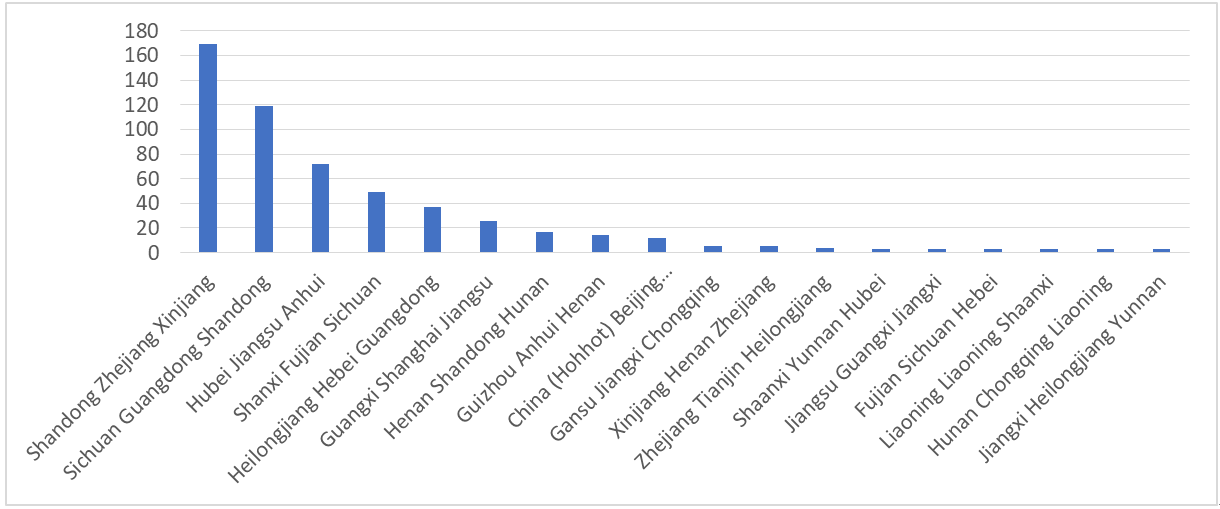
Figure 1: 2020 Regional Distribution of Taobao Towns with a Transaction Scale of More Than 0.3 Billion Yuan in China
Data Source: Alibaba Research Center
Trend 3: The gradual release of county ecological value under digitalization.
An excellent ecological environment is the core wealth of a county. The value transformation of ecological products contained in a good ecological environment is the key to the release of the future potential of the county economy. Digital welfare will serve as the real wealth of technologies. Blockchain, big data, and the Internet of Things will help county ecological resources registration and tracing, ecological value measurement, evaluation, and trading.
Currently, there are still some problems in the process of transforming natural resources into natural capital, such as unclear assets, owners, and non-implementation of rights and interests, which weakens the complete attribute of natural resources as commodities and affects the process of resource capitalization.
Digital technologies, such as IoT, big data, and artificial intelligence, can digitally collect, store, and analyze environmental factors, such as soil, forests, air, and water in a county, build eco-products of the production area based on regional public brands, and use blockchain and other new technologies to establish a quality tracing mechanism for eco-products, realizing the quantitative expression, accounting audit, and dynamic evaluation of eco-products. It also facilitates the participation of ecological resources in market allocation in the form of value and product, thus realizing the reasonable transformation of ecological value as an important growth point of the county economy.
For example, based on the beautiful mountains and clear waters, the city of Lishui has carried out the gross value of ecosystem production (GEP) accounting and improved the value accounting mechanism of ecological products. As a result, the ecosystem will be equipped with quantifiable economic values for a Lishui mode featuring high-quality green development.
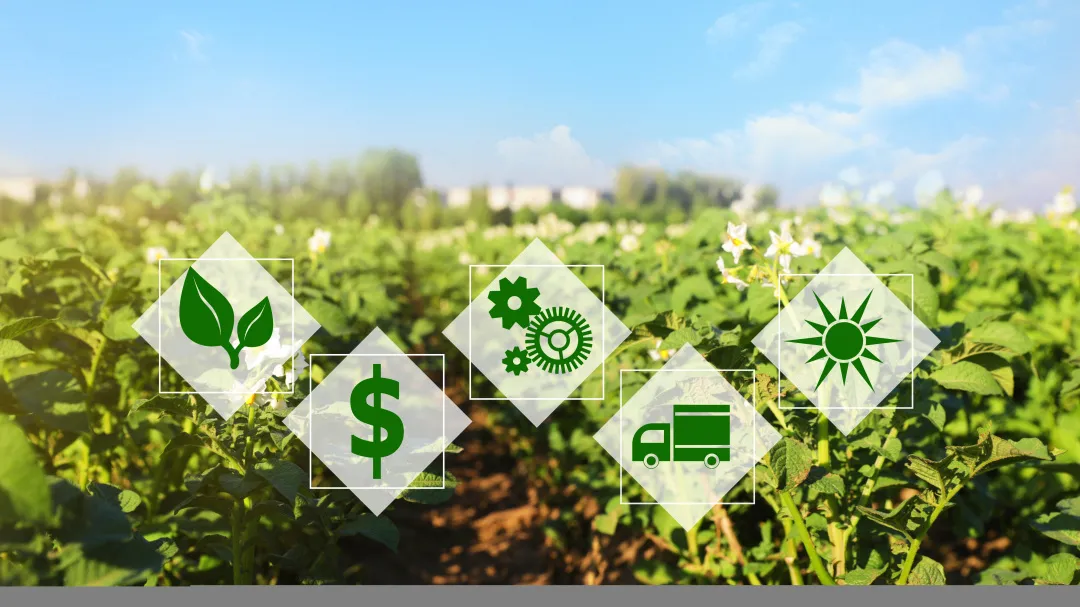
Under the carbon neutrality and consensus, the forestry carbon sink in ecological districts and counties will also usher in historical development opportunities. According to the People’s Daily (the largest newspaper group in China), the forest ecosystem has become the most important carbon sequestration in China, contributing about 80% of carbon sequestration. Counties with good ecological environments can rely on rich forestry resources to explore cross-regional carbon exchange cooperation mechanisms with developed cities to promote the transformation of ecological values.
Digital technologies, such as blockchain and smart contracts, will facilitate carbon account recording, carbon asset registration, and auction. These technologies will empower county-level carbon market transactions and help build a new paradigm for regional green development.
Driven by the overall consumption upgrading, smart agriculture, family farms, leisure, and sightseeing, experience economies are showing explosive growth, which will continuously expand the transformation channel of ecological values and build a low-carbon industrial system for counties and villages.
Model Innovation – Enabling a New Engine for the County Digital Economy
Currently, the counties in China are ramping up their requirements in digital economic development. Each county gradually relies on characteristic industries, gives full play to its characteristic advantages, grasps the trend of industrial transformation and integration brought by digitalization, and accelerates mode innovation. By doing so, they aim to build an agricultural digital ecological chain with production-supply-marketing coordination, promote the digitization of characteristic clusters, accelerate innovation through industrial integration, and enable a new engine for the digital economy.
Trend 4: The agricultural digital ecological chain of production-supply-marketing coronation is coming into shape.
Connecting agricultural products to the Internet is the most direct way for counties and villages to participate in the digital economy. It serves as a guide to promoting the in-depth application of digital technology in the agricultural field. As a result, an upstream digital agricultural production system based on technological devices and underpinned by data algorithms will gradually take shape. In addition, a midstream digital service system supported by blockchain tracing, AI quality grading, global logistics, and inclusive finance will also be formed with a brand new county-level digital agricultural ecological chain featuring production-supply-marketing coronation built through production-marketing interconnectivity and regional public brands. All of these things will promote the county agriculture from the traditional mode of eat what nature gives to labor by understanding nature.
On the production side, with the rise of new agricultural market subjects, such as farmers’ cooperatives, family farms, and leading enterprises in agricultural industrialization, the factory-based and parked-based transformation of agriculture has gradually become a trend, laying a foundation for the development of county-level intelligent agriculture.
Currently, China has built 295 national agricultural science and technology parks and 1,274 provincial-level agricultural science and technology parks. These parks and bases will gradually realize the source through digitization. Agricultural big data, such as seedling raising, are put into the cloud, and standardized agricultural management is formed in irrigation, fertilization, quality assurance, horticultural management, and other aspects through digital system monitoring and the guidance of the soil environment.
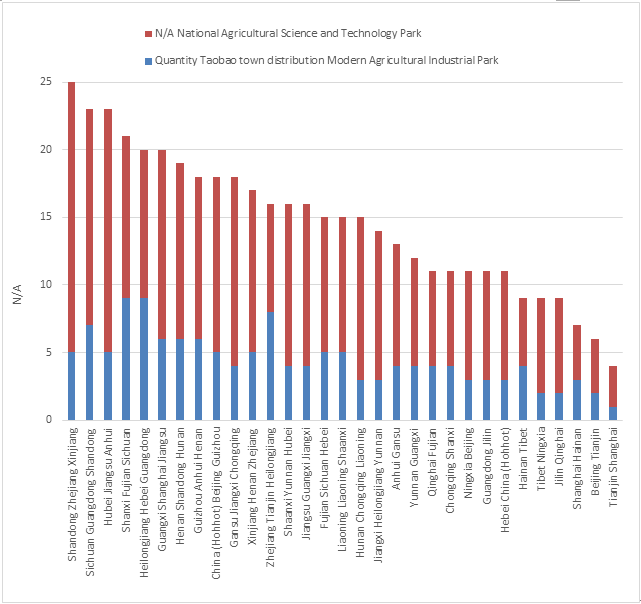
Figure 2: Distribution of China’s National Agricultural Science and Technology Parks and Modern Agricultural Industrial Parks in 2020
Data Source: National Research Network – Big Data Platform of Rural Revitalization
On the logistics side, from farmland to dining table, the most important link to ensure the freshness of agricultural products is to keep products fresh for some time after harvest, which means the most difficult part of agricultural products logistics is the first kilometer.
Currently, the pre-cooling rate of American agricultural products after harvest reaches 60%-80%, but it is only 5% in China. The cold chain logistics coverage rate of storage and fresh-keeping of agricultural products is low, and there are obvious shortcomings, resulting in the circulation loss rate of fresh agricultural products, such as fruits and vegetables, reaching 20% to 30%, which is 5 to 8 times that of developed countries.
Efficient circulation of agricultural products will be implemented from farmers to consumers with each market increasing the construction of production warehouse and sales warehouse along with the county digital logistics delivery system and cold chain logistics system. In addition, the intelligent sorting of digital production warehouses is conducive to the fine management of product transportation.
On the sales side, platform + e-commerce + livestreaming has gradually become the standard of the digital agricultural ecological chain, and the localization of rural e-commerce will be consolidated further.
With the accelerated implementation of 5G and the accelerated promotion of VR/AR technology, the digital agricultural experience economy will also be implemented. In the e-commerce 1.0 era, there is only one screen between farmers’ land to consumers’ dining tables. In the digital county era, the screen in between dissipates, allowing consumers to experience the whole agricultural production process on a higher level. Digitalization of agricultural production and commodity tracing will also help build county-level public brands and increase the added value of regional agricultural products.
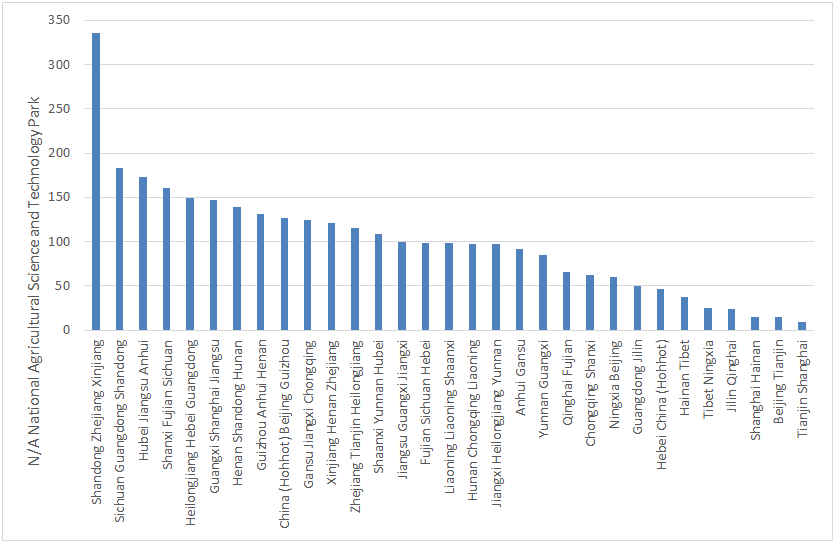
Figure 3: Regional Distribution of Geographical Indications of Agricultural Products in China in 2020
Data Source: National Research Network – Big Data Platform of Rural Revitalization
Trend 5: Industrial integration innovation drives the reconstruction of county economic value.
Digitization breaks the boundaries between industries and drives in-depth integration of industries to a wider range, deeper depth, and higher levels. The innovative development of industrial integration will become an important driving force for the reconstruction of county economic value.
The integrated development of multiple business formats agriculture+. With digital empowerment, the integration scenarios and formats of agriculture and the secondary and tertiary industries are enriched. From the perspective of function expansion, the deep integration of the Internet and characteristic agriculture has led to new industrial formats, such as creative agriculture, adoption agriculture, sightseeing agriculture, urban agriculture, and shared agriculture. The integration of information technology and agriculture has promoted the innovation of production and operation modes, such as agricultural production trusteeship, agricultural industry consortium, and agricultural maker space, giving rise to the factory-based and three-dimensional digital agricultural parks and educational agricultural parks. From the perspective of chain expansion, agriculture accelerates the cross-border integration with the secondary and tertiary industries, promotes the development of six industries, and gives birth to new formats, such as central kitchens, direct supply of agricultural businesses, and personalized customized services for agricultural products.
The integration of new intellectual creation, new consumption, and new ideas is driven by information technology and the production and service of products infiltrating each other, with experience and consumption interacting at the same frequency. The integration of county traditional manufacturing with new ideas, new consumption, and new technologies will sprout bigger growth space. Through creative overlay, theme empowerment, interactive entertainment, and production experience, the accessibility of county-level manufacturing goods can be improved significantly, and users can participate in product design. The integration of Intellectual Creation + Creativity + Culture can be boosted by creating new carrier forms, such as intellectual space, fashion market, and public creation space. This will gradually strengthen the county-level characteristic manufacturing IP, enhance the added value of products, and promote the two-way extension and integration of manufacturing to services.

Digital technology empowers the integration of the cultural tourism system. Digital technology will promote the integration of county tourism with culture, commerce, and sports to create new consumption scenes and more new consumption growth poles in counties. Among them, the consumer side uses digital technology to connect online cultural tourism and various services to create a good experience for consumers. The supply side uses digital technology to consolidate the new infrastructure construction for the integration of cultural tourism, and data lines can be integrated online and offline.
In terms of the whole process of tourism, it is empowered by digital technologies that run through it all the time. Before the tour, the county can promote local IP through a combination of relevant film and television production and event planning to form an industrial chain based on tourism IP. During the tour, smart scenic spots and smart hotels built through the integration of cloud computing, IoT, big data, VR, AR, artificial intelligence, and other technologies will become an important trend, giving tourists an immersive interactive experience. After the tour, the service quality is improved, and consumer stickiness is improved by providing characteristic creative products.
Trend 6: Accelerated emergence of new industrial landmarks based on characteristic cluster digitalization
The typical county economy is characterized by the massive economy of industrial clusters. Under the digital traction, the upgrading of county industrial clusters will enter a new stage of development, forming a digital industrial landmark that deeply occupies specific areas.
The digital metamorphosis of county traditional industrial clusters
The industrial economy of the county takes up half of the industry in our country. 20% of the world’s sports shoes were produced in Jinjiang at their peak. The output of neckties in Shengzhou takes up 80% of the domestic market and 30% of the global market. More than 60% of the world’s Christmas goods come from Yiwu. Through the professional manufacture of one county, one industry, one town, one product, counties become the bridge connecting China to the rest of the world. However, with the decline of demographic dividends and the rise of labor costs, the overall growth rate of the county economy has shown a downward, declining trend. Under the new development pattern and new industry trend, some county economies have seized the opportunity of digital development to accelerate the transformation, upgrading, and innovative development of clusters.
For example, Guangdong province has launched the digital transformation of characteristic industrial clusters to build the Feilong industrial Internet. By opening up multiple links in the industrial chain, such as brand, production, processing, and material supply, the collaborative production and data interconnection between the upstream and downstream of the industry chain have been enabled.
In the future, building a digital industrial public land will become an important path for county-specific industrial clusters to seek transformation. New digital cluster infrastructures, such as public information platforms, shared manufacturing centers, public logistics warehouses, and e-commerce bases for livestreaming have been built. A district-or county-level industrial Internet platform has been built to provide enterprises with services, such as online collaborative cloud work, cloud procurement, and collaborative manufacturing. This way, product R&D and design can be driven by consumer big data, and supply chain management can be improved through channel collaboration.

Construction of featured digital industry IP
With the wide application of digital technology, counties will gradually use their unique local location conditions, ecological and cultural resources, and basic and advantageous industrial resources to build IP for the digital industry around a specific segment of the industry, establish cognition in market segments, and compete for a voice in the market.
For example, based on the geographic information industry, Deqing built a complete industrial chain from chip research and development and equipment manufacturing to data production information service and developed it into a place of the most geographic information-intensive industry. The development of Taicang Sky Mirror Lake relies on the advantage of its location close to the Shanghai metropolitan area with relatively low cost. It focuses on the e-sports industry, centering on game development, game program recording, the operation of competitive games, professional teams, leagues, and livestreaming to create an e-sports industry ecosystem. Building a symbolic and characteristic IP of the digital industry has become an important path to the development of a county-level digital economy.
Trend 7: Regional integration gives birth to a new growth driver of the county’s digital economy.
The first half of the digital economy relies on high-end talents, capital, and other factors, which was characterized by the aggregation of large cities. With the refined division of labor and the chain extension in the digital economy industry and the comprehensive coverage and popularization of new infrastructure, the counties and villages around the big cities, under the development trend of regional integration, will gradually be accessed into the division network of digital economy industries in urban agglomerations, advancing from undertaking spillover to building coronation. Thus, it forms a digital economic community that closely works with central cities and taps new growth points of the county’s digital economy.
Front yard + backyard mode
Counties in urban agglomerations can draw on the overall development advantages of the regional digital economy to penetrate relevant industrial links based on local industrial foundation and resource endowment, such as developing light R&D centers and mobile time-sharing offices with the help of superior ecological environments. High-end talents in central cities conduct flight assembly-type R&D at the best time to drive the local innovation ecology, rely on local labor resources to build an information technology outsourcing (ITO) service cluster with a low technical threshold, such as intelligent service center, data sorting, labeling and cleaning, and image digitalization, build a regional digital economy industry personnel training, skills upgrading and enterprise service integration platform based on the digital economy education and training, industry incubation, and conference competition, or rely on the regional industrial base, focusing on the introduction of sensors, intelligent hardware, and other enterprises to build information manufacturing industry clusters. As such, an overall development pattern of the core city centering on R&D and design, the county undertaking data + software outsourcing, and hardware production and manufacturing dislocation can be formed.
Currently, the booming digital economy is giving birth to a large number of digital tribes and digital travelers that create content, conduct online education, and conduct service consultations for remote work. Counties with good information infrastructure and a good ecological environment are very appealing to this new group of people.

Production + Application mode
In counties with relatively weak digital industry foundation, the community can take the lead in using policies to guide civilian use and explore scenario applications of the digital industry based on the new infrastructure to develop online healthcare, online education, pilot demonstration of the application of digital culture and tourism, county governance, and other fields, and then guide and promote the digital transformation of local enterprises. Based on the digital sink-in market, counties can improve the basic logistics facilities, cultivate local e-commerce and life service industries, and assist the development of sub-sectors related to the industrial chain, such as e-commerce training and MCN institutions.
Governance Optimization – A New Picture of County and Rural Revitalization
Digitalization has become an important starting point for governments at all levels to promote the modernization of governance capabilities. With the accelerated construction of China’s digital villages, digitalization governance will go deep into the county’s grassroots, accelerating the unification and coordination of county and rural public services, making county economic decision-making more scientific and intelligent.
Trend 8: The unification and coordination of county and rural government service moves towards integration and coordination.
In recent years, China’s counties have successively carried out the reform and exploration of digital governance – Internet + Government Services. According to the 2020 Evaluation Report of National County Digital Agricultural Rural Development Level, the online service rate of county government services is 25.4%, and the informatization-based county services are still in the primary stage. Digital villages will accelerate the process of county informatization and digital governance and build an interconnected and coordinated county-village government service system.
Online organizations lay the foundation for county-level digital governance. Based on the new Internet organization systems, such as the government cloud and the village DingTalk, the relevant organizations, subjects, and residents of the county have moved online in the form of organizational structure. Based on this, we will build a mesh management system to form a micro-circulation of grassroots governance, gradually improve the applications of residential unit address books, information release and inquiry, convenient life, and agricultural technology services, and optimize the county and rural government service system.
The online processing of county and rural government service
Cross-system, cross-business, cross-level, cross-region, and cross-department are the inevitable requirements of county digital governance. The information exchange and data sharing are realized by vertically promoting the coordination from village to township to county and horizontally promoting the coordination among various departments. This way, a county government affairs process with efficient coordination from top to bottom is established to fully realize the online processing of governance affair services and people’s livelihood governance with the public service with one permit.
Government affairs services facilitate the interaction of villagers. Online two-way interaction and multi-dimensional collaborative governance have become an important direction of county digital governance. Convenient communication and interaction among grassroots cadres, cadres and masses, and the masses are conducive to improving the efficiency of grassroots governance. Through the establishment of digital modular-based public opinion feedback, the secretary’s mailbox, villagers, and other public opinions, we can promote the openness, fairness, and transparency of rural governance, promote the participation of the whole people in common governance, and improve the service level at the grassroots level. Credit will become an asset through the implementation of the incentive-oriented rural credit point system. The credit points will be connected with government affairs, medical care, education, finance, and human society to build a credit ecosystem, which is conducive to mobilizing villagers to participate in governance and build a better community together.
Trend 9: County economic decision-making becomes more scientific and intelligent.
Digital technology provides a more practical foundation for industry stocktaking, industry analysis, and trend prediction in a county. The intelligent data hub of the industry will become the infrastructure for the intelligent decision-making of the county economy. Through the integration of key data, major projects, and major policies, multi-department coordination will be promoted to make county economic decision-making scientific and intelligent.
Planning for a county economy based on data intelligence
The artificial intelligence algorithm model enables the county’s various economic operation data to speak. By analyzing the current situation of regional development, industrial layout, industrial chain structure, enterprise distribution, and operation, the integration and multi-dimensional display of industrial economic data is realized to assist the government in evaluating the regional economic development from multi-dimensional and comprehensive perspectives and judge the current situation and future development trend of economic operation objectively and accurately. By doing so, we can carry out targeted industrial development planning, accurate cooperation and investment promotion, and economic governance decisions to achieve accurate governance based on evidence.
The intellectual governance new mode of one image for digital villages
Comprehensively utilize technologies, such as geographic information, remote sensing mapping, and artificial intelligence, to process ecological data, agricultural production data, circulation and trade data of agricultural products. Use one image on the visualized dashboard to carry out digital agricultural monitoring, agricultural products e-commerce insight, and culture and tourism analysis. As such, it aims to grasp real-time market dynamics, the changes in rural production, life, and ecology, and promote rural planning, comprehensive management of rural management, rural environment, and rural services.
Summary
With the accelerated implementation of new infrastructure in counties and by narrowing the digital gap between urban and rural areas, digitalization will empower counties to upgrade production factors in an all-around way. Digital innovation will gradually become the main engine for the transformation and upgrading of traditional industries in counties. The gradual improvement of digital ecology will become the core driving force for the county to integrate superior resources and promote the coordinated development of industries. The Digital County will draw a new picture of rural revitalization and high-quality county development!
Note: This article includes county-level cities, counties, autonomous counties, banners, and autonomous banners but does not include municipal districts, forest areas, and special zones.







